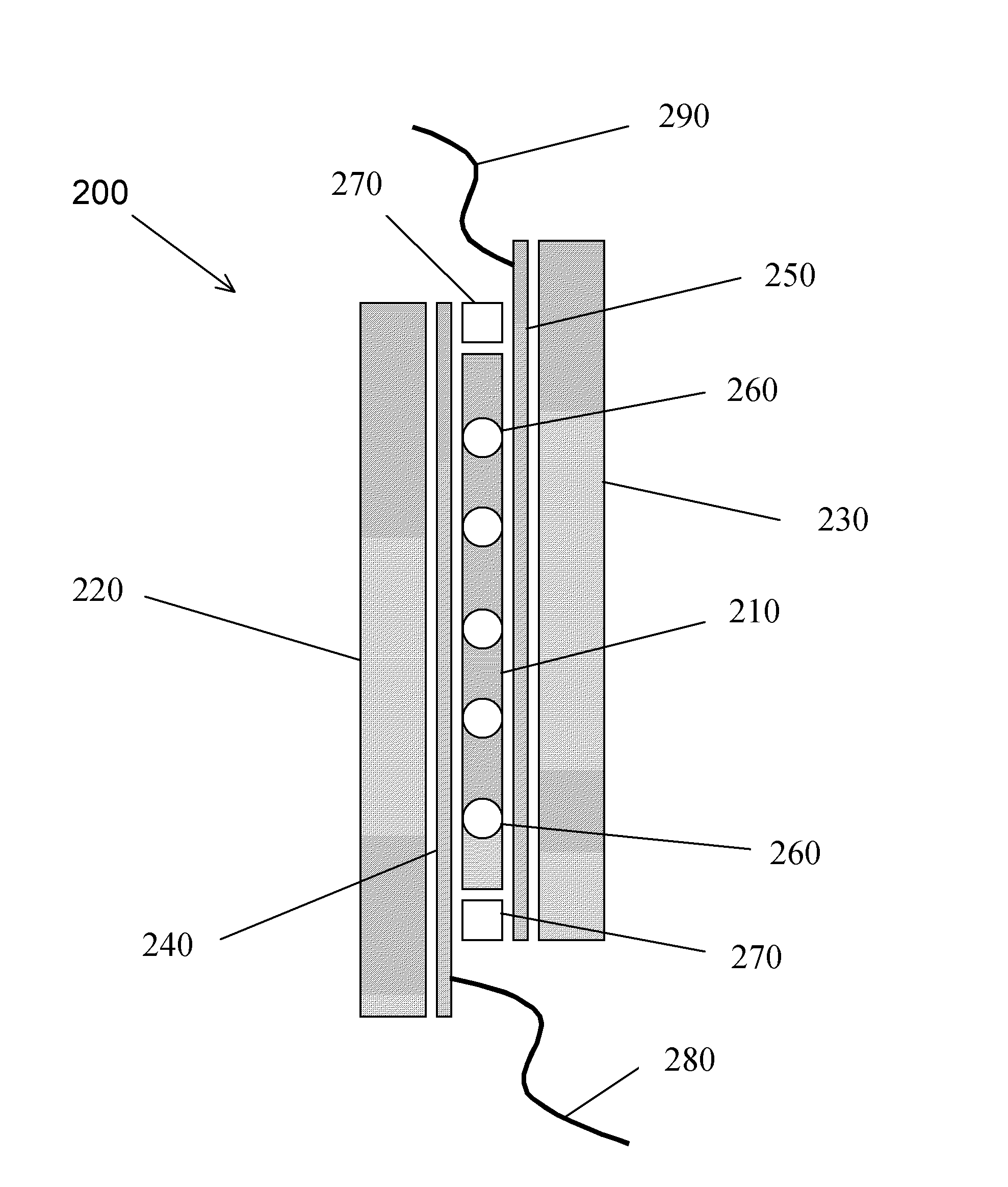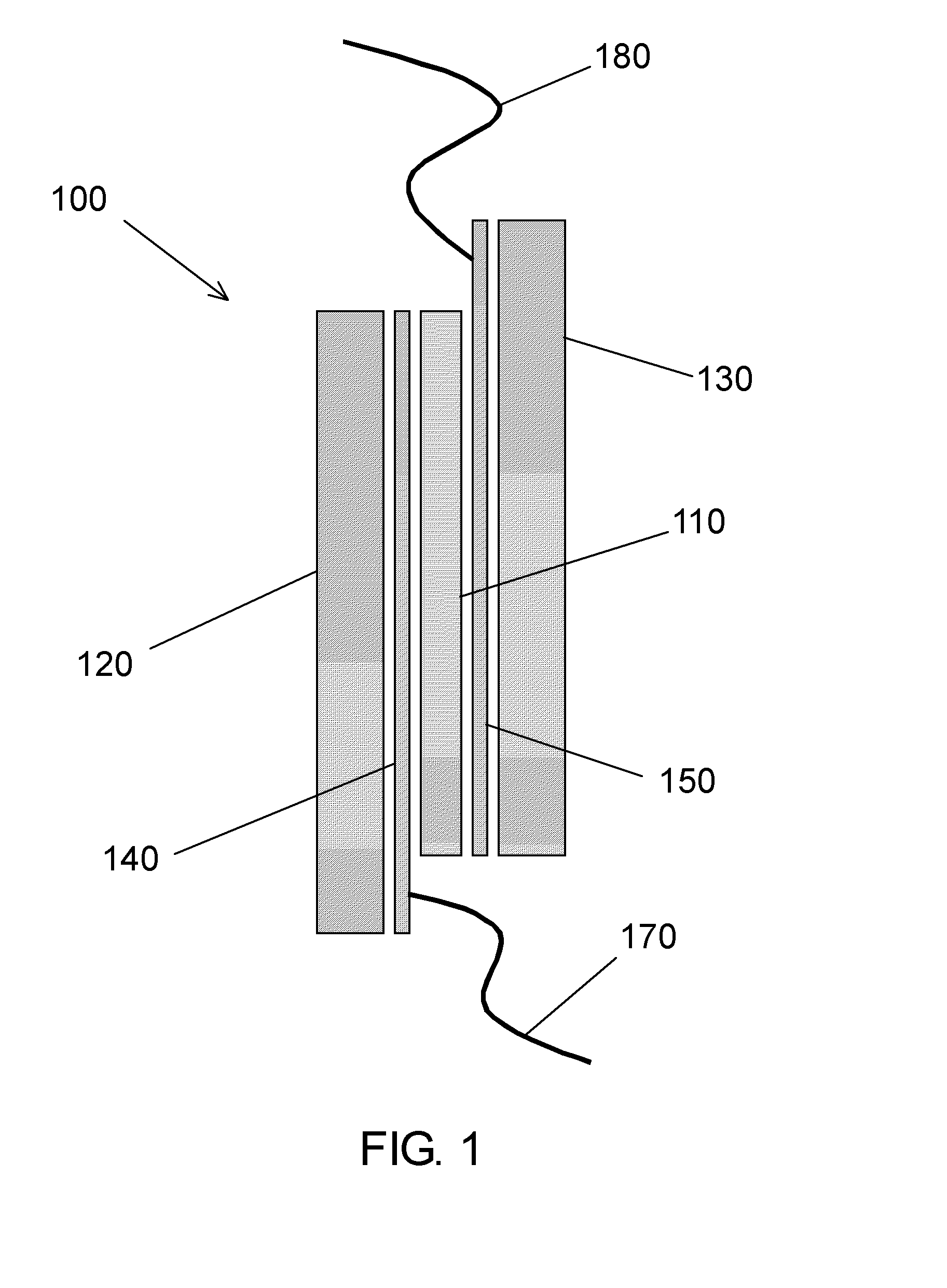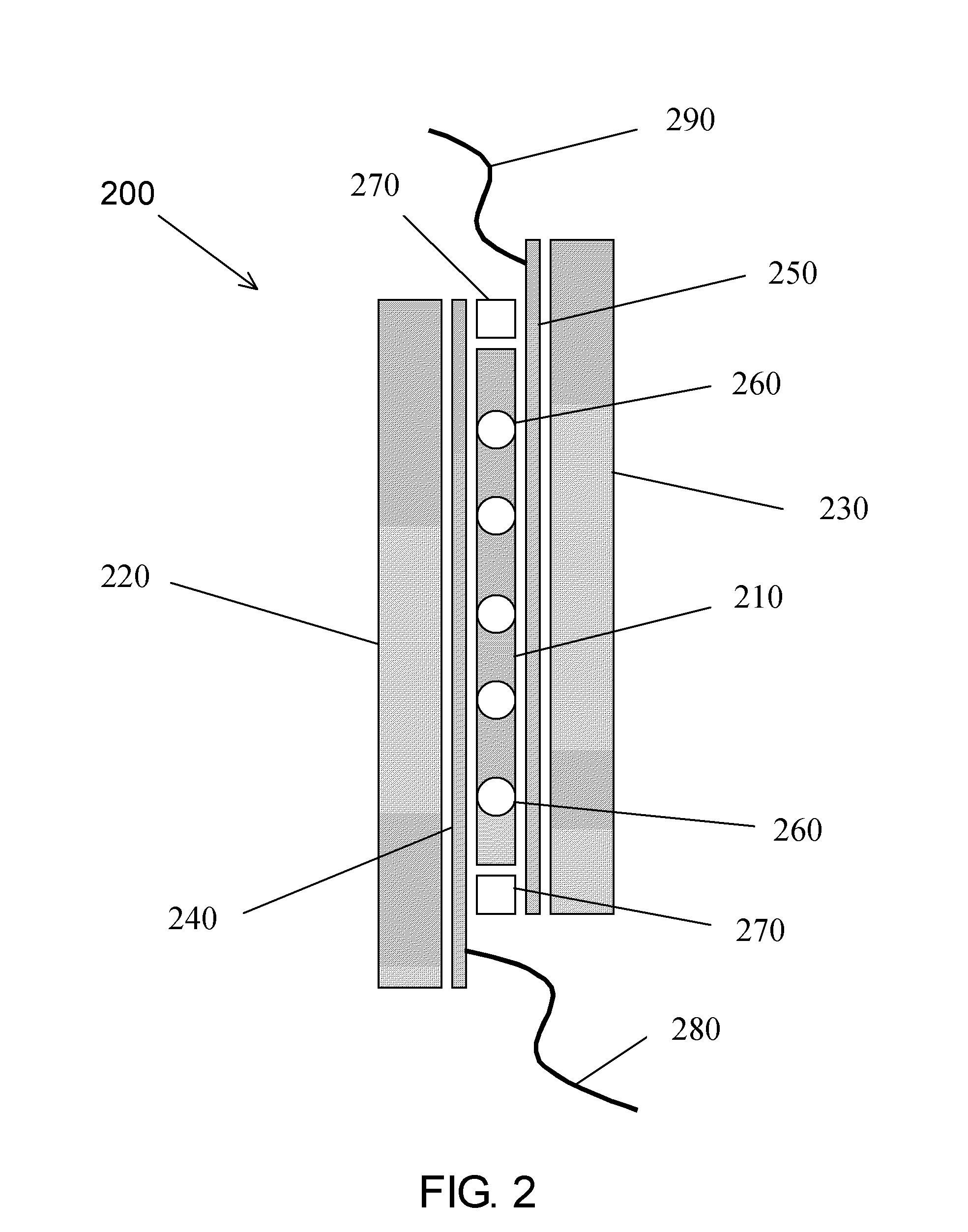Variable transmittance optical filter and uses thereof
a transmittance optical filter and variable technology, applied in the field of variable transmittance optical filters, can solve the problems of slow reversal of photochromics from dark to light state, inability to control manually, and inability to achieve achieving the effect of reducing the cost of optical filters, and improving the efficiency of optical filters
- Summary
- Abstract
- Description
- Claims
- Application Information
AI Technical Summary
Benefits of technology
Problems solved by technology
Method used
Image
Examples
example 1
Preparation of Variable Transmittance Optical Filters
[0274]Method A:
[0275]An ITO coated PET substrate having a thickness of 7 mil (˜178 microns) and a sheet resistance of 50 ohms / square (OC50, made by CP Films) is cut into two 15 cm×15 cm sheets. The substrate is prepared by cleaning with a Teknek tacky dust-removing roller and temporarily laminated to glass plates. Steel spacers are placed on the glass around the perimeter of the PET. These spacers act as hard stops, which set the gap for the final pressed device. A switching material, prepared as described below, is placed on the PET to completely fill the gap between the PET sheets when the device is pressed. The switching material is heated to 80-100° Celsius to facilitate dispensing; however, less heat is required for the actual pressing. The second piece of glass-backed PET is placed on top of the other. The PET sheets overlap such that there is some ITO coating exposed, to act as the external electrical contacts. The sandwich...
example 2
Preparation of the Switching Material
[0278]The switching material was formulated to demonstrate how the components of the formulation can be varied. These formulations can be readily adapted to a desired application by a worker skilled in the art, by replacing the listed ingredients with one or more other ingredients in accordance with the present invention.
[0279]2.1 Formulation for Switching Material #1
Ingredient% by WeightPEGDMA 86015% triglyme75% DAROCUR0.01% lithium perchlorate1%tris(4-bromophenyl)amine (TBPA)6%chromophore:3%TOTAL100%
[0280]The chromophores that are used in Formulation #1 include:
or a derivative thereof having different functional groups on the four peripheral thiophene rings; or
[0281]The PEGDMA, the triglyme, the lithium percholarate, and the tris(4-bromophenyl)amine are all available for example from Sigma-Aldrich of St. Louis Mo. DAROCUR is a photo-initiator available from CIBA Specialty Chemicals of Basel Switzerland, a division of BASF.
[0282]Formulation #1...
example 3
Optical Properties of Switching Material
[0302]The optical properties of the switching material are tested with samples of the switching material.
[0303]VLT Spectrum
[0304]The VLT spectrum of the switching material that had been prepared according to the formulation described in Example 2.3, was determined for its light and dark state. The procedure uses an Ocean Optics spectrometer to measure the % visible light transmittance of the sample, in its light and dark states, over an electromagnetic spectrum. The samples are prepared according to the method described in Example 2.
[0305]As illustrated in FIG. 5, when the molecules are exposed to UV light, the switching material switches to its dark state resulting in a decrease in the percent transmittance of the material in the visible range between 400 and 750 nm. An electric charge of 2 Volts is then applied to the switching material sample for 3 minutes, causing the sample to revert to its light state. In the light state, more light is p...
PUM
| Property | Measurement | Unit |
|---|---|---|
| visible light transmittance | aaaaa | aaaaa |
| visible light transmittance | aaaaa | aaaaa |
| sheet resistance | aaaaa | aaaaa |
Abstract
Description
Claims
Application Information
 Login to View More
Login to View More - R&D
- Intellectual Property
- Life Sciences
- Materials
- Tech Scout
- Unparalleled Data Quality
- Higher Quality Content
- 60% Fewer Hallucinations
Browse by: Latest US Patents, China's latest patents, Technical Efficacy Thesaurus, Application Domain, Technology Topic, Popular Technical Reports.
© 2025 PatSnap. All rights reserved.Legal|Privacy policy|Modern Slavery Act Transparency Statement|Sitemap|About US| Contact US: help@patsnap.com



